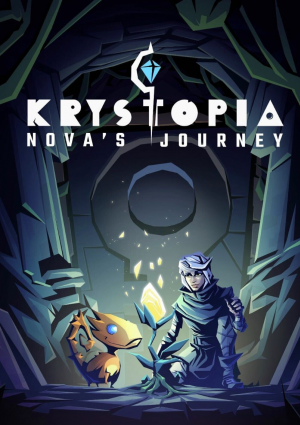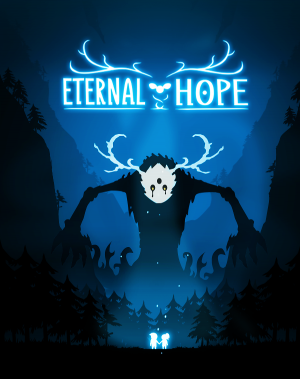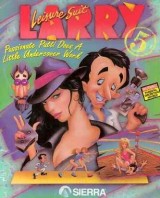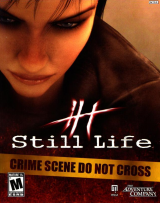Review for A Hand With Many Fingers

My dreams of becoming a “corkboard sleuth” have finally been answered with indie developer Colestia’s A Hand With Many Fingers, if not quite as satisfyingly as I’d imagined. The game has you casually perusing a CIA archive, pulling up documents and cross-referencing locations, places, and names in order to find the next box of locations, places, and names to browse. The events you are investigating are all real, beginning with a news article about the death of Frank Nugan, a prominent Australian lawyer and banker. What starts as a supposed suicide begins to appear more and more sinister with more people involved the deeper you probe, one box of documents at a time. It may sound a little dry, and it is, as there is no one to talk to, no field work to be done, and even the characters you’re investigating are of a bunch of dull businessmen and CIA agents with not much to tell them apart, other than their photographs. Solving an ancient conspiracy case has been on my bucket list for many years, but I had always hoped it would be more intriguing.
The game starts with a message received from a man named Professor Harford, establishing that you are a university student. Harford has asked you to go to a CIA archive to do some research on his behalf, since he is too busy. (It is never explained why Harford has an interest in the case, and this framing device is never brought up again.) Upon your arrival, you’ll explore the archive in free-roaming, first-person 3D with the traditional mouse/keyboard combo. You have your own office with a trusty corkboard, as well as a radio that plays some old-timey piano music, and a TV with Ronald Reagan ranting about terrorism, though you can change the channel to George Bush instead, setting the time period as the late 80s or early 90s.
You start with a box already picked out for you – the first of many you’ll sift through during the game. Once you open a box, the relevant pieces of information will automatically pop up, ready for you to grab. From there you take the various documents, photographs, or newspaper clippings and pin them to the board. You can then freely use a string to join pieces together if you think they are related. You’ll soon find that there is some satisfaction in organising your corkboard efficiently. As you pin more and more items to it, you will probably begin to realise you should have been less liberal with the space and have to rearrange things as you go. There are no objectives related to the corkboard; the game doesn't care if you correctly join some pieces to others. Nor will it alert you if you are wrong. It exists merely as a visual record of your progress.
This can still be helpful, however, as evidence selection and the connections drawn between them are left completely up to your discretion. It is suggested in-game that you take your own notes when you play, as there is no interface (no GUI at all save for a reticule and occasional tooltips) for recording clues or facts, so you will need to devise your own system and refer to your corkboard for reminders if necessary. Each document of importance will likely refer to a location, year, or a person’s name (all three if you get lucky), which are already conveniently highlighted for you in colour-coded ink. From there you must proceed to find the next link in the evidentiary chain.
For example, the first newspaper article is about Nugan’s death, in Sydney, 1980. You’ll then go to the next room, whose cabinets are grouped by major geographical regions, walk to the Australasia section and open the drawer marked ‘1980’ to find the card marked ‘Nugan.’ This card will display serial numbers of relevant boxes in the basement. Once you’ve made a note of these numbers, you can head downstairs to find their associated boxes, and return to your office to start the process again on the designated examination desk. Searched boxes will automatically be piled up around the room, which is helpful since multiple characters can end up having ties to the same box, saving you the trip back to the basement to find it all over again. And if nothing else, the growing stacks at least serve as an effective indicator that you are making progress.
The archive itself is a drab, dreary government building with limited detail, but there are certain elements that make it a little less banal, such as the office window that looks out onto the dimly lit street outside. Peering through it, you may wonder why a car is just sitting there with its headlights on. The 3D graphics are very much on the basic side, but they are perfectly serviceable for what the gameplay requires. Your research is usually accompanied by the humming of a ceiling fan or air conditioner, but sometimes you may hear thumps or clattering sounds as you go about your business. At one point I was startled by a ringing phone, and there was no one on the other end when I answered it. This all contributes to a creeping sensation that you are being watched, and that you are looking into things you shouldn’t be.
Some of the evidence you uncover is annotated in red ink by an unknown party, either providing small clues or just sharing a sceptical opinion about the contents of the document. The eerie atmosphere and my desire to know more about the identity of this mysterious person served as the primary motivations to keep me going with my investigation. That’s because the mystery itself was unfortunately of no interest to me. While I managed to squeeze some fun out of the act of investigating, I found myself barely paying attention to the actual events I was researching. I would perhaps notice when someone turned out to be a CIA agent or was trading weapons and narcotics with other countries, but other than that it seemed like the story was mostly about banks and businesses and meetings.
It may have been partly due to my efficient note-taking, but I managed to breeze through the game with no trouble at all. There were no points where I had to stop and think, or even spend much time referring back to old data to see if I had missed anything or needed to cross-reference it with more recent documents. It says a lot about the challenge level that I hardly had to use any of the actual information to progress. Instead I was just looking out for highlighted locations, names and dates, and I was thankful for avoiding the monotony that further scrutiny would have entailed.
After about an hour of playtime, boredom was beginning to set in. Once I had taken a short break, however, I was ready for another crack at it and I was glad I did, as it wasn’t long before a particularly significant event occurred that had me far more invested than before, though I can’t reveal what to avoid spoilers. Not long after that I ran out of leads and was worried I would have to retrace my steps and dig even deeper into the existing evidence to find where to look next. It was at this exact point that the game slowly faded to black and the credits rolled. I hadn’t even realised I’d cracked the case, but apparently I had. I was disappointed in the complete lack of ‘eureka!’ moments I got to experience, especially the fact that it never felt like I really solved anything.
There’s definitely a little something in A Hand With Many Fingers for real-world conspiracy buffs, but for me the shackles of historical accuracy worked to its detriment. Truth isn’t really stranger than fiction very often, so while the premise of the game itself is appealing, it would have been much more enjoyable with more interesting characters and a more compelling mystery at the root of it all. All that being said, if you’re interested in the corporate cutthroat history of the Cold War, then you may want give this game a go. Its budget price and runtime of less than two hours (perhaps longer for those who wish to thoroughly read through every last document) means it can be digested pretty quickly, even if it’ll probably be forgotten about nearly as fast afterward. For everyone else, there’s not much here to recommend: as an investigative research format it has potential, but as a narrative-driven gaming experience, it’s disappointing and a bit of a slog.
Our Verdict:
A Hand With Many Fingers sets a creepy tone with its dimly lit CIA archive environment and ominous sound design, but its drab visuals, dry story, and simplistic gameplay loop fail to spark much interest.
You don't want to miss these articles
Adventure Gamers Community
Community reviews for more Adventure Games (randomly selected)
Review of Leisure Suit Larry 5: Passionate Patti Does a Little Undercover Work
Rating by Antrax (Jun 15, 2013)
Review of Leisure Suit Larry 5: Passionate Patti Does a Little Undercover Work
Rating by Antrax (Jun 15, 2013)



























